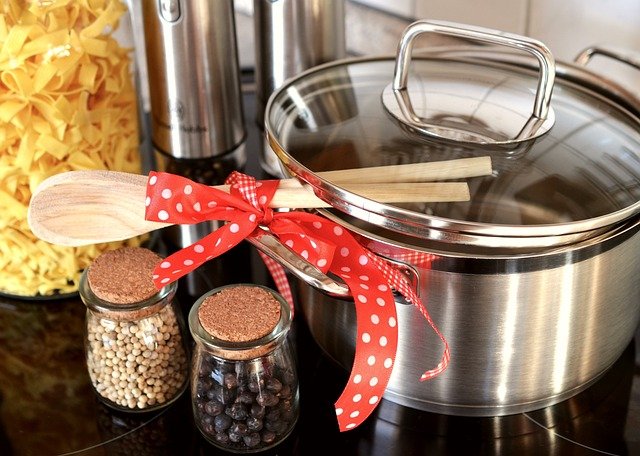Adapting utensils and tools for diverse dietary routines
Adapting your kitchen tools can simplify meal preparation across diverse dietary routines. This guide explains how to choose appropriate cookware and utensils, plan storage and cleaning, and consider safety, measuring, maintenance, and sustainability to support varied eating patterns and reduce cross-contamination.

Adapting utensils and tools to support changes in eating patterns—from plant-forward to high-protein, allergy-aware, or medically guided routines—can make everyday cooking more efficient and safer. Thoughtful selection and arrangement of cookware and utensils reduce cross-contact risks, speed meal prep, and extend the working life of equipment. This article covers materials and surface choices, practical cookware and utensil setups, measuring and safety practices, cleaning and storage strategies, maintenance and energy considerations, and specific steps for allergy-sensitive or specialized dietary routines.
This article is for informational purposes only and should not be considered medical advice. Please consult a qualified healthcare professional for personalized guidance and treatment.
Materials: stainless steel, cast iron, ceramic, non-stick
Selecting the right materials is a practical decision tied to how you cook. Stainless steel handles acidic and high-heat cooking well and resists staining; cast iron delivers strong heat retention useful for searing and braising but needs seasoning and careful drying to prevent rust. Ceramic-coated and non-stick surfaces reduce the need for added fats and simplify cleaning, but they are more vulnerable to scratches and high heat. Balance durability, ease of care, and the cooking techniques you use most when choosing materials for your routines.
Different materials also affect flavor transfer and cleaning needs. For example, porous surfaces used without proper maintenance may harbor residues important to allergy-conscious kitchens, while smooth stainless steel and some ceramic finishes are easier to sanitize.
Cookware and utensils for different diets
Create a core set of cookware and utensils that match common techniques in your routine. For plant-forward cuisines, wide skillets and a good set of mixing bowls are useful, while high-protein or meat-focused routines benefit from heavy-bottomed pots and a well-seasoned cast iron pan. Choose utensils—spatulas, ladles, tongs, and turning tools—in materials compatible with your cookware to avoid damage to non-stick and ceramic finishes.
Prioritize versatile items such as a chef’s knife, flexible spatula, and a reliable stockpot to reduce clutter and support multiple dietary styles. If space allows, consider pairing a dedicated pan or board for allergen-sensitive meal prep to limit cross-contact.
Measuring and safety practices
Accurate measuring supports consistency for diets that require portion or macro control, and it matters for baking or precise recipes. Use liquid and dry measuring tools, metric scales for exact weights, and clearly labeled containers for pre-portioned ingredients. Safety practices include designating cutting boards and knives for different food groups, using color-coded tools for allergens, and following heat limits for non-stick and ceramic pans to avoid surface degradation.
Store measuring tools where they are visible and easy to reach to encourage consistent use; small habits like measuring ingredients before cooking reduce errors and improve adherence to dietary guidelines.
Cleaning, storage, and organization
Cleaning routines depend on materials and dietary needs. Stainless steel and ceramic items can often handle hot, soapy water or dishwasher cycles, while many non-stick and cast iron items require gentle handwashing and specific drying methods. For allergy-sensitive kitchens, prioritize tools that are easy to sanitize and keep separate storage for components used across routines.
Organization strategies—such as labeled drawers, stackable cookware racks, and a small dedicated station for measuring tools—reduce prep time and mistakes. Airtight storage for specialty ingredients preserves shelf life, and transparent containers speed ingredient identification.
Maintenance and energy considerations
Routine maintenance preserves performance: season cast iron regularly, avoid metal utensils on non-stick surfaces, and polish stainless steel when needed. These practices extend lifespan and keep tools safe to use. Energy considerations also play a role—using lids to shorten simmer times, matching pan size to burner size, and choosing flat-bottomed cookware for efficient heat transfer all reduce energy use during cooking.
Select durable materials when possible for sustainability benefits; repairing or reconditioning items often has a lower environmental impact than frequent replacement.
Adapting tools for allergies and special routines
For allergy-aware or medically prescribed diets, set clear protocols to prevent cross-contamination: color-coded or dedicated utensils and storage, labeled containers, and explicit cleaning steps. Use smooth, non-porous materials like stainless steel for items that must be sanitized thoroughly, and keep separate cutting boards and brushes for allergen-free prep.
Assemble a compact kit for the routine—measuring spoons, a scale, airtight jars for specialty flours or supplements, and a few clearly marked pans—to make adherence simpler in everyday cooking and when preparing meals for others.
Conclusion Aligning cookware, utensils, and storage with diverse dietary routines reduces friction and supports consistent meal quality. Focus on material compatibility, precise measuring, clear safety protocols, and organized cleaning and maintenance to prevent cross-contact and streamline preparation. Thoughtful choices about durability and energy-efficient practices also support long-term sustainability and reliable performance across multiple eating patterns.





